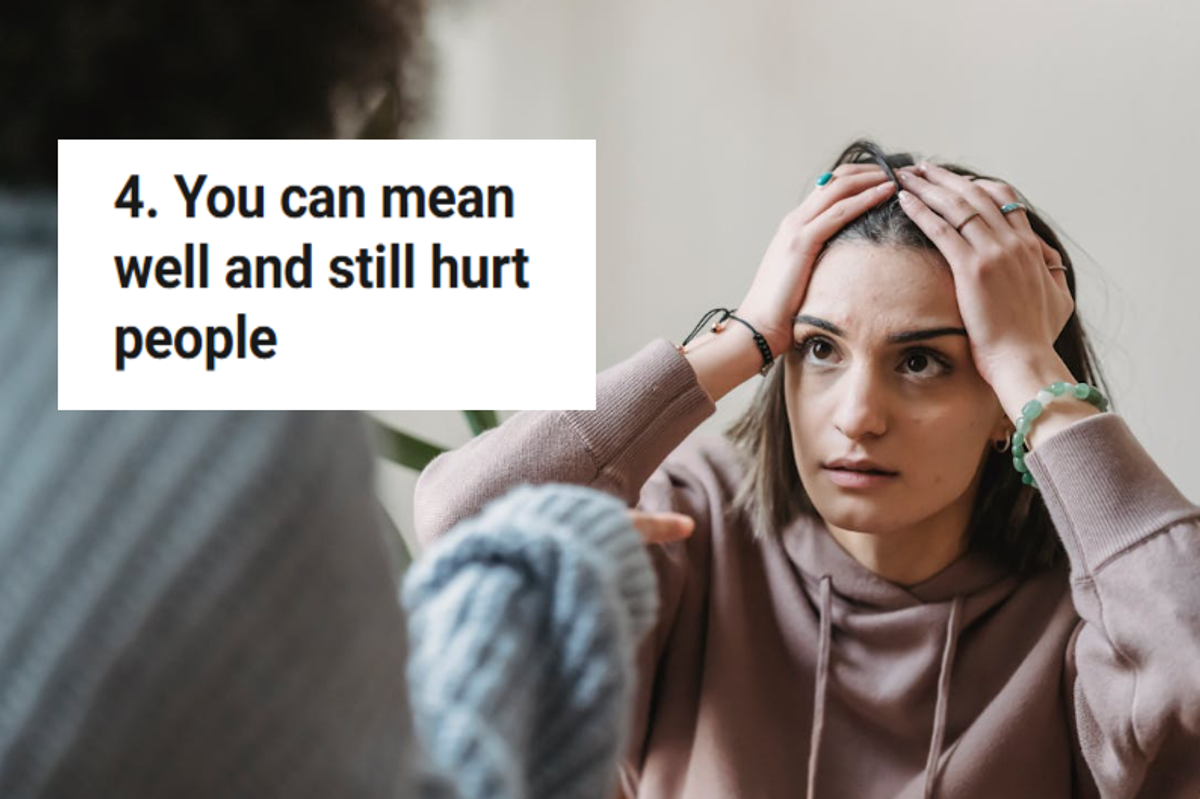On Monday, April 10, Cedric Anderson walked into North Park Elementary School, where he killed his wife, Karen Smith, as well as a student and, ultimately, himself.
A police officer responds to the shooting at North Park Elementary School. Photo by David McNew/Getty Images.
According to a Los Angeles Times report, Smith, a teacher at the school, was in the process of attempting to divorce Anderson when he murdered her.
Outwardly, Anderson was a doting husband — prone to over-the-top declarations of love. His history of domestic violence allegations suggests a darker story.
While it's unclear what exactly transpired between Anderson and Smith before the shooting, her family reports that she was terrified of her husband, refused to talk about their relationship, and even went into hiding at one point.
Anderson (L) and Smith (R). Photos via San Bernardino Police Department via AP.
When relationships turn abusive — or potentially so — friends and family of the victim are often prone to wonder: "Why doesn't he or she simply leave?"
In Smith's case, she did leave. And she was murdered.
"Leaving is not always the immediate safest choice for somebody," says Bryan Pacheco, public relations director for Safe Horizon, an organization that assists victims of relationship and familial abuse.
Frequently, leaving an abusive partner can increase the danger to the victim. One study, which surveyed data from three cities in three English-speaking countries, concluded that women were three times more likely to be murdered by estranged or former husbands than by their current spouses.
"In an attempt to get the victim to stay, abusers will escalate their tactics," Pacheco says. "They’ll escalate the abuse. They’ll escalate the coercion. They’ll escalate the abusive behavior in an attempt to get that person to stay."
To help provide victims with a way out, organizations like Safe Horizon try to mitigate the risks abusive relationships can pose, even when they're nominally over.
Photo by Frederic J. Brown/AFP/Getty Images.
Part of what made Anderson such a danger to Smith was his familiarity with her routine: He knew where she worked — and he most likely knew that, as her spouse, he could access her workplace without raising suspicion.
When Safe Horizon makes contact with a victim who wants to break up with an abusive partner, it helps them come up with a safety plan, which entails determining the least risky time to leave — often when the abuser is at work, on vacation, or on a lunch break.
Shelter locations, where victims might temporarily relocate, aren't made public to prevent stalking or worse. A victim who leaves might be placed in a shelter in a different neighborhood or neighboring town to minimize the risk of running into their abuser.
"This is where you sort of understand how difficult it is to leave, because often someone might have to uproot their life for their safety," Pacheco explains.
For friends and family members, it can be heartbreaking not to urge loved ones to leave their abusive partners.
Pointed questioning can cause victims to shut down, as Smith reportedly did with members of her family. Victims might be hesitant to end their relationships for fear of further violence, and individual situations are nuanced and complex.
A bus waits outside of North Park Elementary School. Photo by Robyn Beck/AFP/Getty Images.
The best thing loved ones can do, Pacheco says, is offer unconditional support — and connect them to organizations that have the resources and expertise to assist.
"Use language that they’re using," he explains. "Maybe you notice a physical mark. You can say something like, 'I notice that you have this scar on your arm. What happened?' and sort of determine how comfortable they are speaking to that."
More importantly, friends and family can simply be present when victims are ready to seek aid.
And the most helpful thing?
"It’s really just to believe somebody," Pacheco says.
Fearing disbelief can dissuade victims from leaning on their loved ones for support. It makes it difficult for victims to go to the police to report early warning signs. And, most critically, it can dissuade them from seeking a safe way out.
Simply believing victims could go a long way to making tragedies like Smith's far less common.




 An upset woman sits in her car.via
An upset woman sits in her car.via  An upset man grabs his head.via
An upset man grabs his head.via  A stressed-out woman.via
A stressed-out woman.via 

 David Bowie on swing in red suit
David Bowie on swing in red suit David Bowie album cover
David Bowie album cover Prince
Prince
 We really wish this were true. via @bryaninmsp/
We really wish this were true. via @bryaninmsp/